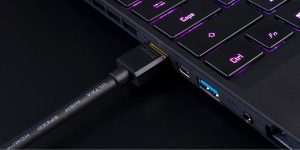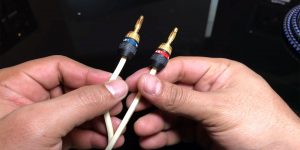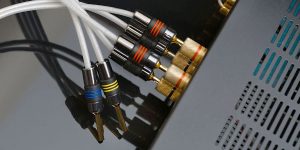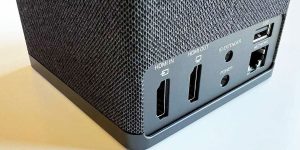There are many kinds of cables for transmitting audio, such as optical, coaxial, acoustic, or HDMI. But today, I will tell you just about the coaxial speaker cable, one of the oldest transmission mediums (first used in 1858) that many of you probably want to know more about.
It’s most often associated with Cable TV or Broadband Internet and is somewhat underrated in digital audio. So how does coaxial cable work? First, we’ll look at what it consists of, what coaxial cable connectors types are, compare them to optical cables, and then I will answer questions about what the coaxial cable is used for.
Parts of a coaxial cable
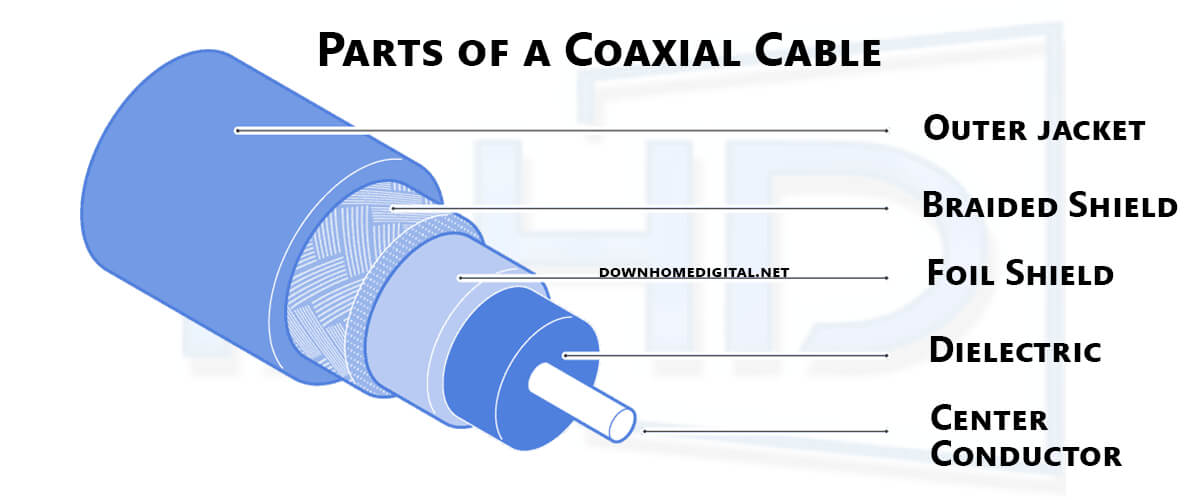
The coax audio cable gets its name because of its design, as its core and woven shield have the same axis, i.e., coaxial. Such a cable transmits radio frequency signals ranging from 20 kHz to 300 GHz, and most often, it can be found in satellite dishes.
Let’s take a closer look at what it consists of:
- The Center Conductor is the inner part of the coaxial cable that carries the signal. It is a single core (most often) or stranded copper wire.
- Dielectric Insulator – The center conductor is surrounded by a layer of insulating material known as a dielectric. It serves as a barrier between the center conductor and the outer conductor.
- Outer Conductor – The outer conductor is a metal layer surrounding the dielectric. Its main purpose is to protect the signal from external interference and hold it inside the cable. It is usually made of braided wire or metal foil (copper or, less frequently, aluminum).
- Shielding – A shielding layer provides additional protection against outside interference by absorbing and reflecting any outside signals that might disrupt the transmitted signal. There are several types of shielding, including braided, spiral, and foil.
- Jacket – The outermost layer of coaxial cable is the jacket. It is most often made of flexible plastic and protects from physical damage and environmental factors such as moisture and heat.
Understanding coaxial cable impedance and its role in signal transmission
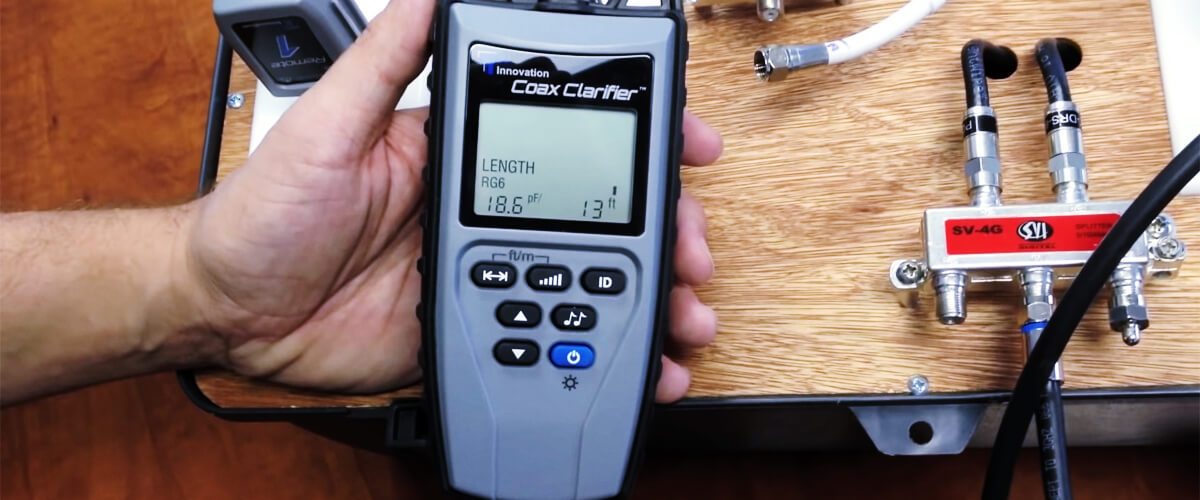
To consider the types of coaxial cable cords, start with characteristic impedance. Understanding the role of this factor will make your choice easier and improve the quality of your signal transmission.
The ratio of the center conductor’s diameter to the outer conductor’s diameter and the insulating material’s dielectric constant determines the coaxial cable’s impedance. This ratio is called the “propagation speed” of the cable, the rate at which the electrical signal propagates through the cable.
Signal transmission is optimal when the source and load impedance matches the cable’s characteristic impedance. Conversely, if the impedances do not match, it can cause signal loss, leading to poor signal quality and reduced transmission speed. That’s why using a coaxial cable with the correct impedance is important.
In addition to impedance matching, coaxial cables have a maximum frequency range that they can transmit without significant signal loss. This frequency range is determined by the cable design and the type of material used in the insulation layer. As a result, higher-quality cables can transmit signals at higher frequencies with less signal loss than lower-quality cables.
Thus, cable impedance plays a critical role in signal transmission, ensuring effective transmission without significant loss or interference.
So, the resistance of a cable to the passage of electrical current is measured in ohms (Ω), and coaxial cables have two basic types of this figure, which are 50 Ω or 75 Ω.
A 50 Ω coax cable is used for high-frequency digital transmissions (Ethernet) and radio transmitter signals (connecting to their antennas). A cable with a 75 Ω characteristic is used for cable television and radio frequency video, which are often found in your home.
There are also 52 Ω and 93 Ω, which are much rarer. And the rarest and most “powerful” is 30 Ω (used in medical equipment such as MRI, X-ray machines, or CAT scanners).
Coaxial cable types
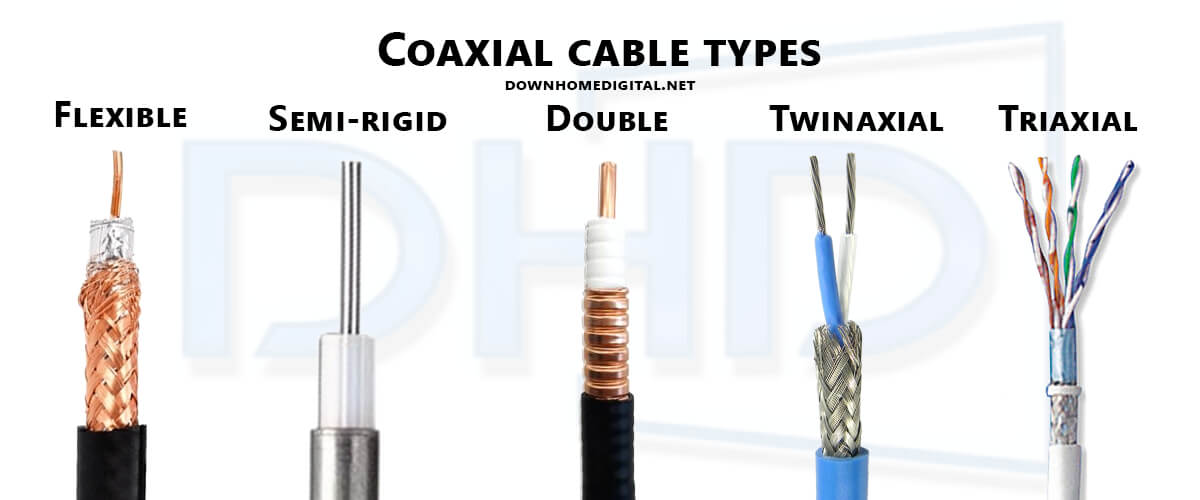
You may have already guessed that not all coaxial cables are the same. There are quite a few types of cables, and they can also be classified by design:
- Flexible coaxial cable. The most common type, but also the most unreliable in terms of signal loss, which is due to its flexible braid without a screen.
- Semi-rigid coaxial cable. Accordingly, it transmits the signal better but is less flexible because it has an outer metal layer.
- Double coaxial cable. It consists of two coaxial cables joined by one outer braid.
- Twinaxial Coaxial Cable. There are two separate insulated copper wires in one plastic wrap.
- Triaxial Coaxial Cable. Two insulated wires are in the same braid, but a dielectric insulator separates them. Triax Cable is optimal because it provides grounding and shielding, reduces signal loss as much as possible, and is less interference-resistant.
So, we come to the Radio Guide (or RG) characteristic, which gives the user complete information about the cable: outer diameter, core diameter, dielectric diameter, impedance, shielding, and even connector type. All this information in the form of letters and numbers is in the form of markings on the cable itself and has been used since World War II.
The most commonly used coaxial cable types are RG-6 and RG-59. RG-6 is commonly used for cable television, satellite systems, and digital audio and video signals. It has a larger diameter than RG-59, allowing for better high-frequency signal transmission over long distances. RG-59 is often used for analog video signals, surveillance, and older cable television systems.
In addition to RG-6 and RG-59, commonly used types of coaxial cables include RG-11, which is a thicker cable used for long-distance cable and satellite television systems and broadband Internet access, and RG-8, which is used in amateur radio systems and military applications.
There is also RG-7 (same as RG-6/U), RG-58/U (amateur radio, Ethernet), and RG-60/U 1(high-definition cable TV).
Types of connectors used in coaxial speaker cable
Various connectors are used to connect coaxial cables; you need to know which is right for your case. In this section, I will detail the most common ones – RCA, BNC, F-type, N-type, and SMA connectors – and mention some not-so-popular ones.
The most popular connectors for coaxial cable:
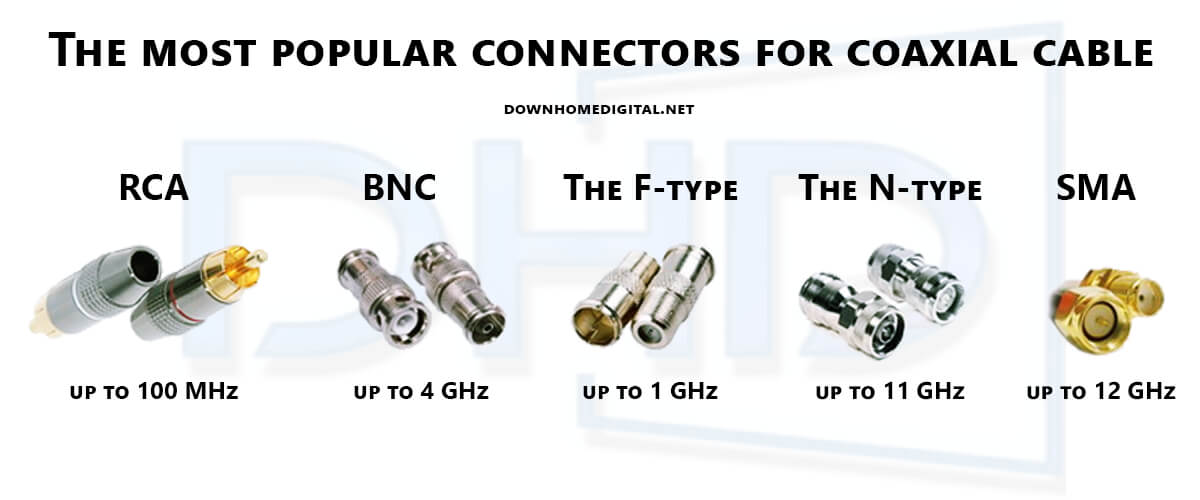
- RCA coaxial cable is the most popular. Its connectors visually look exactly the same as analog RCAs but are designed to carry broadband digital signals using Coaxial and S/PDIF in the home (transmitting audio and video digital signals) because they carry signals up to 100 MHz.
- BNC connector has a higher stable transmission frequency up to 4 GHz (from 4 to 10 GHz, the loss increases significantly), so it is used for high-quality audio and video in computer networks, scientific equipment, and professional audio and video applications (for high frequency and broadband signals).
- The F-type connector operates at frequencies up to 1 GHz and is the most common type for RG-6 television and antenna cables (cable television and satellite systems).
- N-type connector – popular for low-frequency microwave applications and operates up to 11 GHz (sometimes up to 18 GHz). Used in communications and broadcast equipment (RF applications, spectrum analyzers, antennas).
- The SMA connector also comes in handy in microwave applications and has a frequency range of up to 12 GHz, although many modern versions reach as high as 24 GHz. Also used for RF applications, cell phone antennas, Wi-Fi systems, SDR, etc.
Less popular types of connectors are:
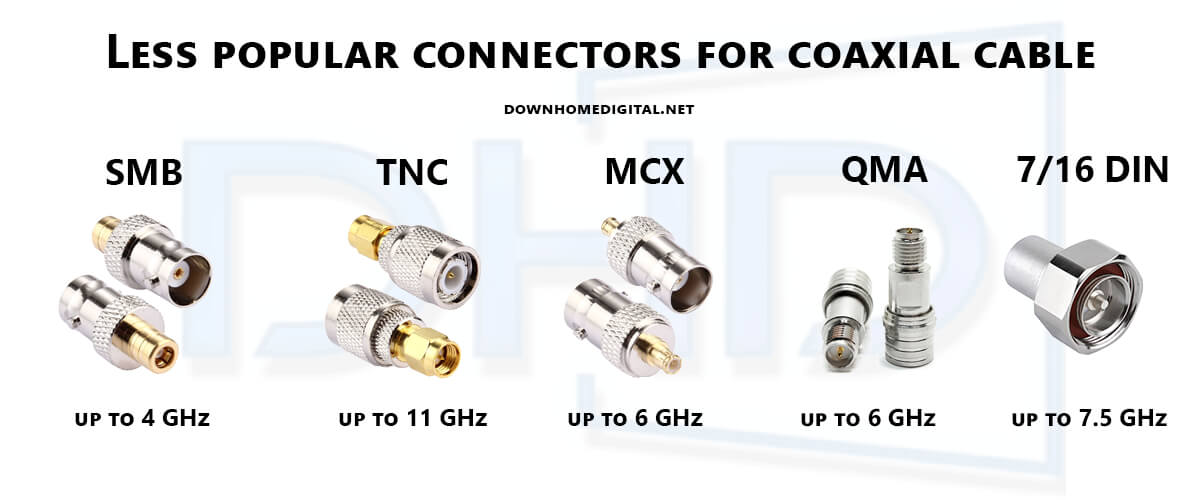
- SMB Connector – essentially a mini SMB with an understated frequency of up to 4 GHz.
- TNC Connector – A threaded version of the BNC connector for low frequencies (up to 11 GHz).
- MCX Connector – Micro Connector popular in Europe (up to 6 GHz). Used for software oscilloscopes, signal generators, and SDRs.
- QMA Connector – A quick replacement for the SMA, but with a lower frequency (up to 6 GHz). Used in defense and military radio devices and for cell phone station antennas.
- Connector 7/16 DIN – threaded HF connector for connections in antenna networks of cellular phones.
Difference between coaxial and optical cable
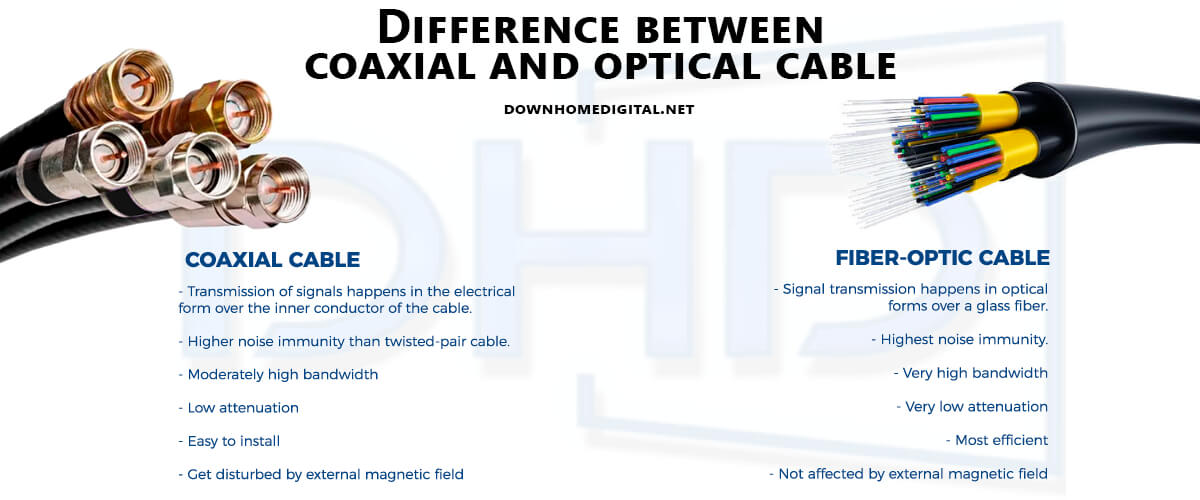
Coaxial vs. optical cables are two different types of cables used to transmit audio and video signals. And the main difference between these two types of cables is how these signals are transmitted.
Coaxial cables use a copper conductor surrounded by insulation and a metal shield to transmit signals. The signal is transmitted through the center conductor, and the shield helps prevent interference from outside sources. Because of their design, they can transmit higher-quality audio.
On the other hand, optical cables use fiber optic technology to transmit signals. The cable comprises a thin glass or plastic fiber that carries the signal as light pulses. The light signal is transmitted through the fiber optic cable by reflecting off the walls of the fiber. Optical cables are commonly used for broadband digital audio and video applications, such as home theater systems and professional audio and video installations because they perform optimally over short distances (up to 15 feet).
One of the main advantages of optical cables over coaxial cables is that they are immune to electromagnetic interference that can affect the quality of the signal transmitted through them. Optical cables can also transmit high bandwidth signals over long distances without significant signal loss, making them ideal for high-performance audio and video applications.
Coaxial cables, however, have the advantage of being more common and affordable than optical cables. They are also easier to install and more durable than optical cables, which can be brittle and require careful handling.



